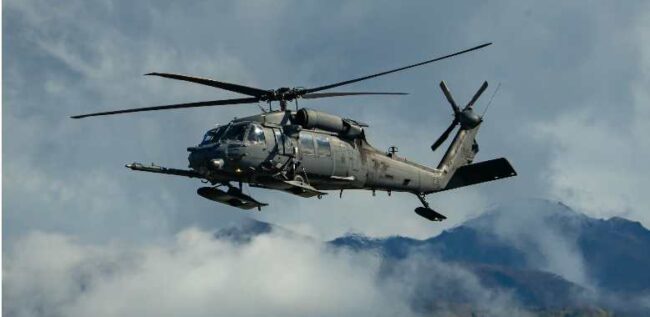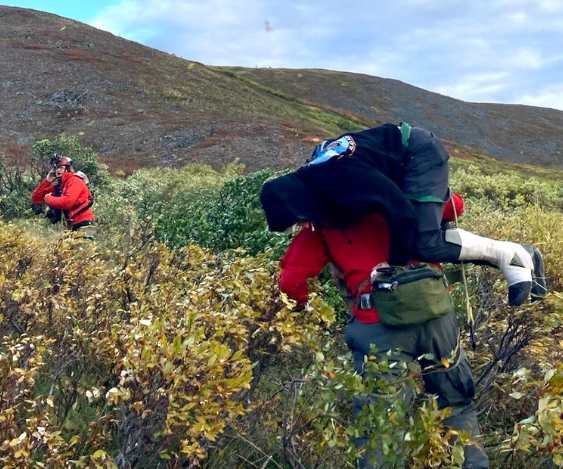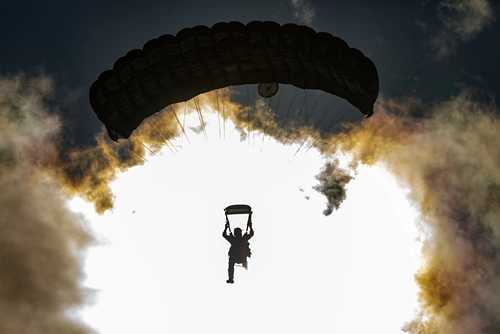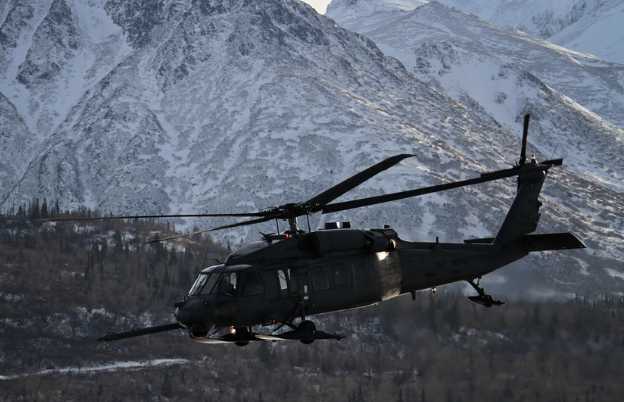
Alaska Air National Guard members of 176th Wing conducted two missions in one helicopter sortie Sept. 15, rescuing two general aviation pilots at two crash sites in Southcentral Alaska.
The missions started when the Alaska Rescue Coordination Center received notice that a civilian helicopter pilot had witnessed a PA-18 plane crash on Little Mount Susitna about 40 miles northwest of Anchorage
The AKRCC requested assistance from the 176th Wing, and the 176th Operations Group search and rescue duty officer, Alaska Air National Guard Lt. Col. Greg Ulrich, promptly dispatched a 210th Rescue Squadron HH-60G Pave Hawk helicopter with 212th pararescuemen (PJs) on board.
The HH-60 crew located the crash site, landed, and the PJs made contact with the pilot before loading him onto the helicopter. Though the pilot was uninjured, he was unprepared to stay the night at the crash site.
“It was a fairly easy mission; the weather was good,” Ulrich said. “We didn’t know if it was going to be a hoist or an airland. They were able to airland not too far from the patient just downhill a way, the Guardian Angels were able to walk up to the patient, and he was able to walk down to the helicopter.”
While still working the first mission, Ulrich detailed the team with another mission to rescue the victim of another PA-18 crash near the Knik Glacier about 50 miles northeast of Anchorage. The impact of the crash activated the plane’s 406-megahertz emergency locator transmitter.
The crash was close enough for the rescue team to transition from one mission to the next.
“Because the first patient was uninjured, the PJs determined it was not time-critical to get him to a hospital, and the helicopter crew decided to pick up the second patient before they dropped him off at the hospital, so they went out to Knik to pick up the second patient,” Ulrich said.
In a near repeat of the first mission, the HH-60 crew located the second crash site and offloaded the Guardian Angels to make contact with the uninjured pilot. In addition to the 406 ELT transmission, the second pilot spoke to the AKRCC with a satellite-phone and provided rescuers with exact coordinates.
“Up here in Alaska, there are lots of places that don’t have cell coverage,” Ulrich said. “Even if you’re flying, and you have coverage line-of-site to a tower, once you get on the ground there’s a good chance you will lose coverage.”
AKRCC officials stressed how aircraft having 406 ELTs quickly expedites AKRCC notification. Having an up-to-date registration will help rescue officials get in contact with pilots quickly to confirm if rescue resources are needed or if the activation was accidental or non-distress.
Out of an abundance of caution, both pilots were taken to Providence Alaska Medical Center in Anchorage and released to medical officials.
[content id=”79272″]








